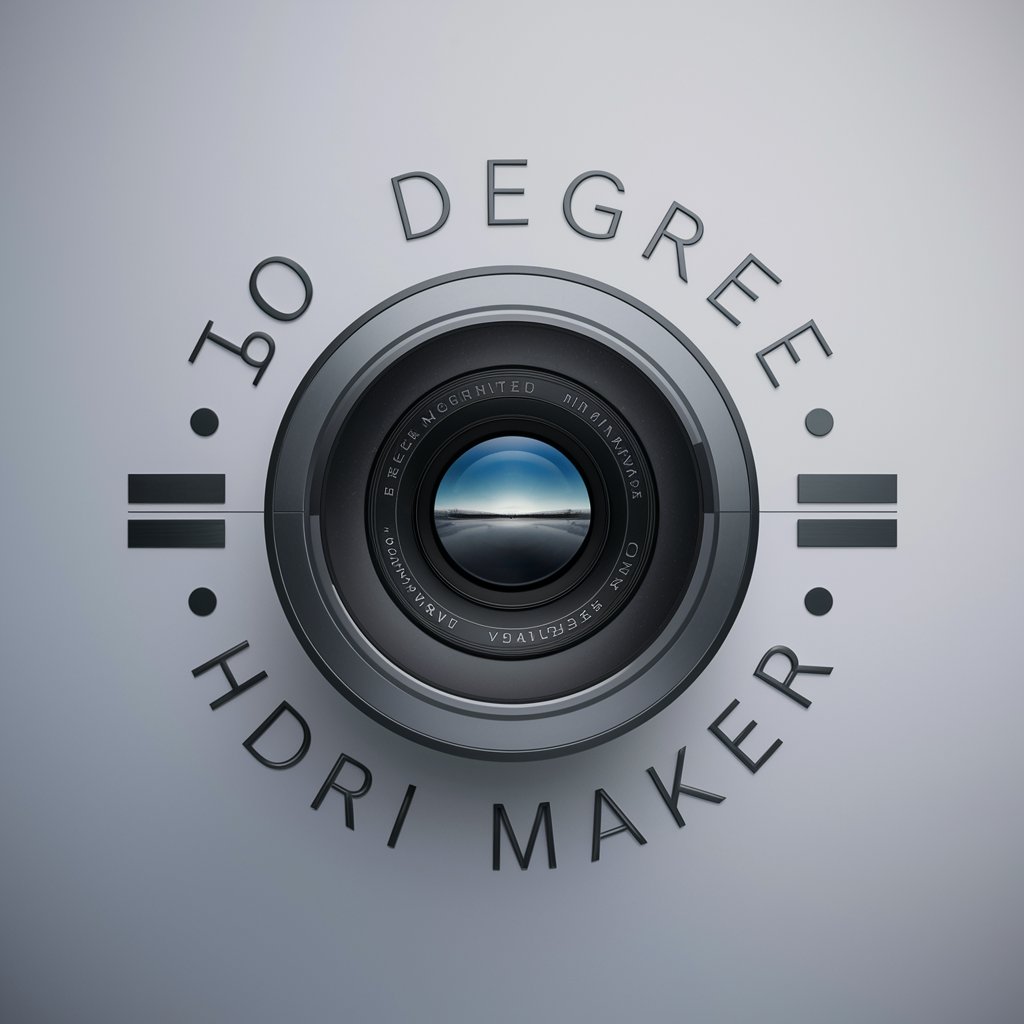360-Degree Video Production - 360-Degree Video Making

Hello, I'm your guide to 360-Degree Video Production, created by Uni, ready to help you dive into immersive video creation.
Immerse your audience with AI-powered 360-degree videos.
Describe the best equipment setup for 360-degree video production.
What are the optimal lighting conditions for shooting 360-degree videos?
How do you stitch footage seamlessly in post-production?
Can you explain the key differences between various 360-degree cameras?
Get Embed Code
Exploring 360-Degree Video Production
360-Degree Video Production encompasses a broad range of tools and methodologies designed for creating, editing, and showcasing immersive video content. This includes selecting appropriate camera equipment capable of capturing high-quality 360-degree footage, understanding the intricacies of scene framing and lighting to enhance viewer immersion, and mastering post-production techniques such as footage stitching and virtual reality (VR) integration. An example scenario involves filming a panoramic video of a bustling cityscape, requiring seamless stitching to ensure a smooth, immersive experience for viewers exploring the scene in VR headsets. Powered by ChatGPT-4o。

Core Functions of 360-Degree Video Production
Equipment Selection
Example
Choosing between different 360-degree cameras based on resolution, dynamic range, and compatibility with various mounting solutions.
Scenario
A filmmaker decides to use a GoPro Fusion for action scenes due to its high durability and effective stabilization, ensuring clear, immersive footage even in dynamic environments.
Scene Framing and Lighting
Example
Adjusting the placement of lighting equipment to avoid glare and shadows that could detract from the 360-degree video experience.
Scenario
During a nighttime shoot, a production team strategically positions LED panels to illuminate a historical monument from all sides, preventing dark spots in the 360-degree capture.
Footage Stitching and Post-Production
Example
Utilizing software like Adobe Premiere Pro or Mistika VR to stitch together footage from multiple camera lenses, creating a cohesive panoramic video.
Scenario
A post-production specialist uses advanced stitching algorithms to merge clips from a six-lens 360-degree camera setup, removing visible seams and ensuring a seamless viewing experience.
Who Benefits from 360-Degree Video Production?
Content Creators
Individuals or teams focused on creating immersive content for platforms like YouTube, Vimeo, or specialized VR platforms. They benefit from the ability to produce highly engaging, exploratory content that attracts viewers seeking novel experiences.
Educational Institutions
Schools and universities leveraging immersive video to enhance learning experiences, offering students virtual field trips and realistic simulations. This technology supports interactive, engaging educational content, making complex subjects more accessible.
Marketing Professionals
Businesses and marketing teams looking to leverage immersive experiences for brand promotion, product launches, or virtual tours. 360-degree videos offer a unique way to engage potential customers, providing a vivid showcase of products, services, or spaces.

Getting Started with 360-Degree Video Production
Begin Your Journey
Start by exploring yeschat.ai for a complimentary trial that requires no login or subscription to ChatGPT Plus, offering you a hands-on experience with 360-degree video production.
Select Your Equipment
Choose the right 360-degree camera that fits your project's needs, considering factors such as resolution, frame rate, and ease of stitching. Popular options include the Insta360 Pro 2 and the GoPro MAX.
Plan Your Shoot
Storyboard your video, considering the 360-degree format. Think about viewer immersion, camera placement, and movement. Ensure your scene is well-lit and free from obstructions for the best visual experience.
Capture Your Footage
During filming, keep the camera stable and at a consistent height. Pay attention to the entire surroundings, as everything will be in view. Minimize movement to avoid viewer discomfort.
Edit and Share
Use software like Adobe Premiere Pro with the GoPro VR Reframe plugin for editing. Stitch your footage, add spatial audio, and consider your platform's specifications for VR content before sharing your masterpiece.
Try other advanced and practical GPTs
360 Degree Images
Explore every angle with AI-driven insights.

Online Degree
Empower your future with AI-driven education.

Degrees
Empowering Creativity with AI

Masters Degree USA Expert
Navigating your U.S. master's journey with AI

College Degree Programs
Empowering your educational journey with AI.

Advanced Degree Program
Empowering Advanced Education Decisions

180 degree HDRI maker
Crafting Realism with AI-Powered HDRI

Date Guru
Crafting Memorable Dates with AI

Date Coach
Empowering Your Love Life with AI

Date Planner
Crafting Your Perfect Date, AI-Enhanced

Date Buddy
AI-powered personalized dating advice

Date Detective
Unravel dates and codes with AI precision.

360-Degree Video Production FAQs
What is 360-Degree Video Production?
360-Degree Video Production involves creating immersive videos that allow viewers to look in any direction. These videos are captured using specialized cameras that record all 360 degrees of a scene simultaneously.
What equipment do I need to start?
You'll need a 360-degree camera, a stable tripod or stand, editing software capable of stitching and rendering 360 footage, and optional VR headset for playback testing.
Can 360-degree videos be edited like regular videos?
Yes, but with specialized software or plugins that support 360-degree footage. Editing involves stitching footage from multiple cameras, adjusting the horizon for stabilization, and applying effects or transitions suitable for VR.
How can I ensure high-quality 360-degree video production?
Use cameras with high resolution and frame rates, ensure ample lighting, carefully plan your shots, and pay attention to stitching quality during post-production to avoid visible seams.
Where can I share my 360-degree videos?
Platforms like YouTube, Facebook, and Vimeo support 360-degree content. Choose the platform that best fits your audience and content type, keeping in mind each platform's specifications for optimal viewing.
